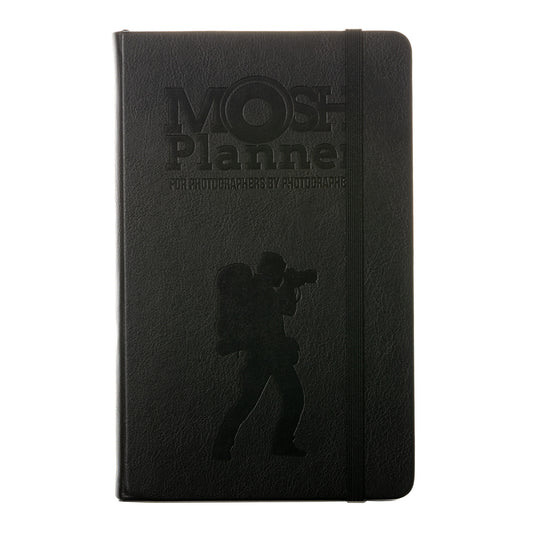We've gone on a lot of road trips, virtually always with the goal of taking pictures. Sometimes for specific tasks, like on a personal quest, such as visiting all of the United States' national parks. Then there are road excursions we take just to see what we can find in a new region.

Here are some suggestions for making the most of your road trip:
Schedule Photography Time
Unless you have unlimited time, you'll have to tailor your vacation to match your schedule. Make a list of sites you wish to see, bearing in mind that you might not be traveling alone. Allow time for exploring while also blocking off photo possibilities. Unless you're merely taking snapshots, you'll need time to concentrate on your photography.

Think About Your Trip Companions
If you're traveling with a friend, spouse, or family, see if they'd want to accompany you or prefer to go their own way while you pursue your photography goals. Even if they decide to attend, tell them to bring a book or a game if they aren't interested in photography. These types of arrangements make for happier campers all around and save your road vacation from becoming a guilt trip.

Also, remember to include your traveling companions in some of your images so you'll have lovely memories to share with them – it's so simple to send digital photos to the people in your photos or to relatives and friends back home. Encourage your fellow travelers to take photos of each other, and remember to chronicle things that may not appear photogenic at first, such as the delicious Italian meal you ate or the quaint B&B where you slept. Always bring your camera with you and make time for photography, even in the most mundane situations, and you'll end up with a highly personal and treasured collection of photographs.
Do Your Homework
Check the sites of interest along the route you intend to take. An old-fashioned map is the best method to achieve this. Once you're on the road, a GPS or the WAZE app will help you view the broad picture so you don't miss anything that's only a few miles away. For example, when visiting Zion National Park, we booked a day excursion to Coral Pink Sand Dunes State Park, which turned out to be a fascinating and gorgeous setting, much different from the main attraction we had come to see, and provided us with the opportunity to ride a dune buggy. Also, utilize the Internet to check up whatever you need to know, from where to stay to dawn and sunset times. The more prepared you are ahead of time, the more enjoyable your road trip will be.

Make A List Of The Items You'll Need To Bring
If you're driving your own car from home, you'll probably be able to bring any gear you want, regardless of size or weight. If you're flying first, though, you'll have to be more restrained. Consider the sort of photos you want to capture. Bring a macro lens if you want to shoot flowers; a long lens if you want to photograph birds or other animals; and zoom lenses in the 24-200mm range if you want to picture landscapes.
Make A Shooting List
You could make a shot list if you're really ambitious. This is a useful exercise for thinking about what you'll see and the equipment you'll need to record it. It also serves as a handy reminder of what you're looking for, ensuring that you don't forget anything. It can also help you prioritize if you don't have enough time to accomplish everything. Another option is to plan your vacation around one or more themes. You can, for example, photograph amusing signs, odd barns or silos, and some of the people that pass by. Making a list like this will also help you figure out what equipment you'll need.
Every day, check your photographs to ensure that your camera and lenses are in good working order. Download your photographs to a laptop if possible so you can see them magnified and determine if anything needs to be changed or if any modifications or repairs are required – an excellent reason to have two camera bodies on the trip. Also, spend a few minutes each day cleaning your cameras and lenses to safeguard them and avoid problems.
Prepare To Come To A Complete Stop
Keep the items you'll need inside the car, not in the trunk, so it's ready to go at a moment's notice once you're driving. Because the travel is such an essential aspect of any road vacation, you'd be good to keep your eyes peeled for interesting or unexpected things along the route. A stunning rainbow, a field in ideal light, or vibrant wildflowers carpeting the land beyond the shoulder have all appeared on several occasions when we were on the road.
Because these things are a matter of serendipity, you can't bet on seeing something later. Simply pull over to a safe location and capture the photo while you can. If you plan to do this, it's a good idea to have someone else drive, but even if you're alone, pulling off the road, turning on your warning lights, and grabbing your gear (it'd be great if you had the foresight to put the right lens on your camera) will only take a few moments so you can take those now-or-never shots will only take a few moments.
And, rather of sticking to the interstate, schedule some journeys on the lesser routes – those blue highways — if you enjoy discovering the unexpected. Stop and inquire about picturesque routes or unique attractions in the region. Take that dirt route, or simply trust your intuition and don't be scared to get lost. Exploring is half of the enjoyment, and finding something worth stopping for is the payoff.
Consider Dawn And Sunset Photography
Everyone enjoys photography at sunrise and sunset, but unless you prepare ahead, you won't be able to be where you want to be. No matter where you are, you can seek up the timings of dawn and sunset using the Internet or other apps. You may also look for dawn and sunset images shot at other locations. Once you have the precise time, arrive half an hour before dawn or one hour before sunset (and plan to stay at least half an hour after sunset, especially if the sky is cloudy).
Make a decision on where you want to be at important times. You may achieve this by conducting an Internet search or by physically scouting each place. You'll know where to find the sun in respect to numerous spots that appeal to you if you know how to discover east and west. Most national and state parks have a circular road that allows you to preview their vistas, so driving that route and getting a sense of what you want to photograph is a smart idea.

Of course, you may need to hike in to capture the images you truly want, so plan accordingly if you want to arrive before sunset. Also, if sunset coincides with dinner time, consider eating early or bringing a picnic to avoid having to leave too soon due to hunger.
Break Free From Clichés
After traveling all the way from New Jersey, Barbra Streisand and Seth Rogen, who play an overprotective mother and her underachiever son in the film "The Guilt Trip," stand at the edge of the Grand Canyon. "How long are we expected to stand here?" the mother inquires after they have been riveted for a few minutes. They swiftly agree that enough is enough and proceed.
We've met folks who go on speed tours, pausing at each spot long enough to shoot a selfie or a picture of the most common scene before moving on. That doesn't sound like a fun road trip to us.

Your drives and hikes should both take you off the usual route and lead you to areas that aren't visible from the road. That's your chance to have a really personal connection to the location you're in while also creating photos that are completely unique to your vision. Pushing yourself to discover fresh viewpoints or other methods of depicting the area you're in is another technique to come up with unique photos. For a unique touch, include the road in some of your photographs. It does need some creativity, but if you're going on a photography road trip, you already have that.
Start planning your next adventures with Mosh Planner.










